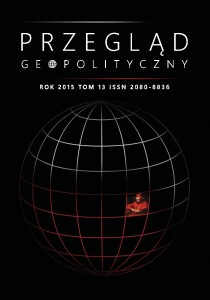ISLAM W SYSTEMIE ŚWIATOWYM W KONCEPCJI IMMANUELA WALLERSTEINA
ISLAM IN THE WORLD SYSTEM CONCEPT OF IMMANUEL WALLERSTEIN
Author(s): Jarosław MikołajecSubject(s): Sociology, Islam studies, Social Theory, Sociology of Religion
Published by: Polskie Towarzystwo Geopolityczne
Keywords: islam; world-systems theory; core; semi-periphery; periphery; Brandt Line;
Summary/Abstract: The article refers to a research perspective of world-systems theory, whose most prominent representative is an American sociologist, I. Wallerstein. World-systems theory is a critical continuation of the tradition of modernization and dependency theories. The basic research scheme of this theory is a spatial relationship between the core, periphery and semi-periphery. These categories may be interpreted broadly, which makes them applicable to the field of religion and geography. Islam has a spatial dimension and boundaries that separate it from the areas dominated by other religions. In this aspect, the border between Muslim and Christian countries, coinciding with the Brandt Line, is of particular importance. Both sides of this border are inhabited by communities which are radically different, both socially and economically. This creates a number of tensions between them, including spontaneous migration from southern to northern countries.
Journal: Przegląd Geopolityczny
- Issue Year: 2015
- Issue No: 13
- Page Range: 49-61
- Page Count: 13
- Language: Polish

